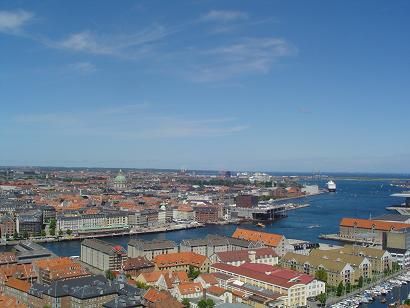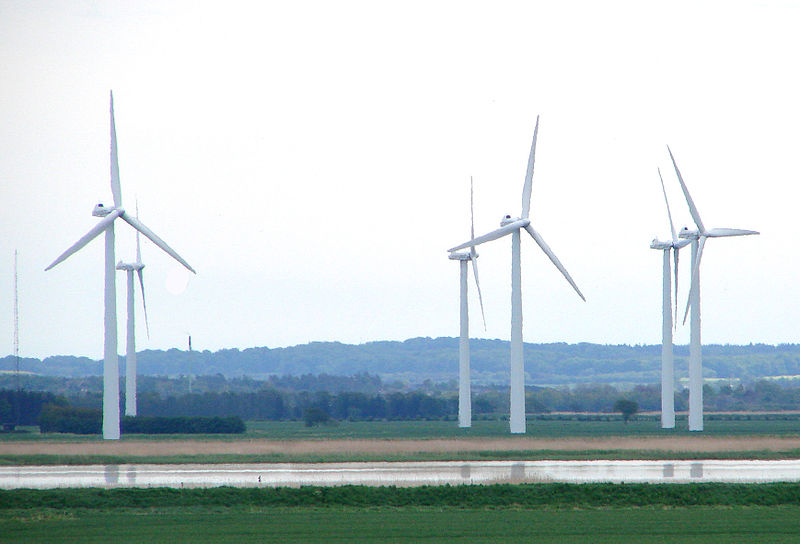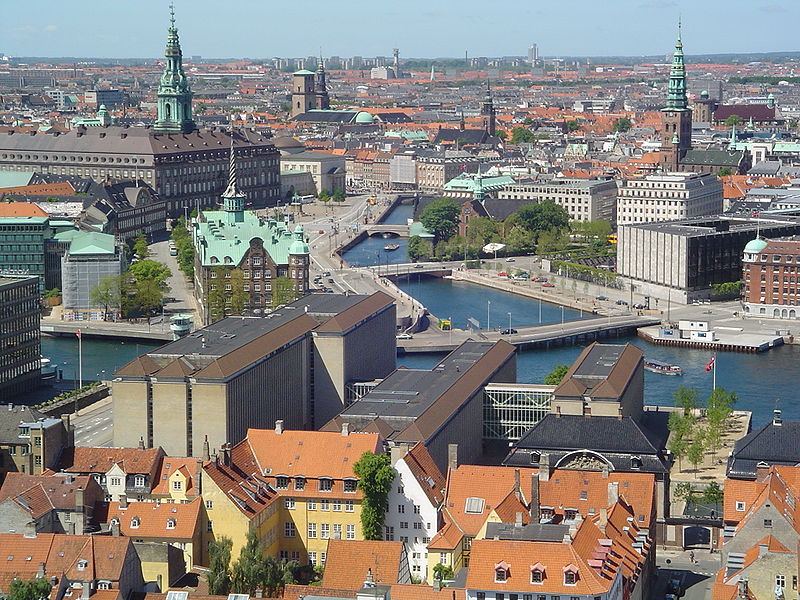New advances towards a global green transition
Denmark’s national experience emphasises that progress can be made to a sustainable future. With the strong belief that action must be better than inaction, as well as cheaper in the long run, the author lists here some new Danish initiatives that can serve as examples internationally.

Since 2006 when the Stern report pointed to the cost of inaction, scientific proof of the negative consequences of climate change has accumulated, leaving us with little doubt that climate changes are happening, that humans are making them worse, and that the cost of inaction will exceed the benefit of action by far.
Pessimism is the natural response to the lack of unity as extreme weather events become more frequent, bringing along human casualties and damages to buildings and infrastructure, rising health costs and threatened ecosystems. These are just a few indisputable trends linked to anthropogenic climate changes.
Nevertheless I choose to be a ‘conservative optimist’: I believe that the world might slowly be heading towards a more sustainable path. When I travel the world and talk to business leaders, politicians and NGOs, I meet an increased awareness that the transition towards a green economy is the only way nations can continue their growth. If we look beyond the arguments at the negotiation tables and into what governments and businesses are actually doing, it is obvious that things are actually happening.
Effective use of resources
An example of a successful result in effective use of resources and recycling of materials is the car manufacturer BMW. By targeting part of their production at realising the potential from re-use of commodities, the company experienced a 10 per cent saving in materials per car in 2011. Considering the fact that half of the cost of producing a car originates from materials, the saving is substantial and a great example of how it pays off to be green.
Global production and consumption is challenging the climate, natural resources and the environment
Optimism about the road ahead of us has to be matched with realism: there are still immense obstacles to progress. Currently there are three key issues. First of all, global production and consumption is challenging the climate, natural resources and the environment. Secondly, we need to ensure continued economic development in an environmentally friendly way. Thirdly, there are the different responsibilities and the distribution of cost – both in terms of reduction commitments and in terms of transferring technology and know-how.
It is an uphill battle, but we can act and work to become greener. With 5.5 million inhabitants, Denmark is a small nation. We cannot change the world and we are well aware of that. However, we strive to set an example.
If other nations follow our lead, 5.5 million people can give a lead to 50 million people. And 50 million people can make a substantial difference in changing the world in a greener direction.
The road to a Green Economy
 A Green Economy is about realising the benefits of sustainable policies. It is about linking ambitious political objectives to investments, technology and industries. And it is what we are working towards in Denmark. The main idea is that by working with the market forces and by sharing best practices, we will be able to facilitate development towards a sustainable economy. However, regulation is needed to counter the failure when markets do not react fast enough.
A Green Economy is about realising the benefits of sustainable policies. It is about linking ambitious political objectives to investments, technology and industries. And it is what we are working towards in Denmark. The main idea is that by working with the market forces and by sharing best practices, we will be able to facilitate development towards a sustainable economy. However, regulation is needed to counter the failure when markets do not react fast enough.
Denmark is working towards a green transition, and the Green Economy plays a key role in doing that – both in domestic and foreign policy. Recently the Government launched an ambitious new Climate Policy Plan, Towards a Low Carbon Society. The plan sets an interim target of a 40 per cent greenhouse gas reduction by 2020. With the plan we intend to demonstrate how it is possible to combine overall economic development with a reduction of greenhouse gas emissions – and how it is not a question of either/or. If a strong example can be set, other countries will follow in the same direction. The Climate Policy Plan is built on the experience gained in Denmark throughout the last 40 years in not only reducing pollution, but also in building the foundation for green technologies.
In Denmark, we have managed to decouple energy consumption from growth, while building one of the most competitive sectors for renewable energy. We have succeeded in reducing water consumption in absolute terms while the economy grows, and have built strong competences in non-revenue water, groundwater mapping and adaptation to climate change. Also, we have managed to mitigate problems with air pollution, while building a strong industry for pollution-reducing technologies in sectors such as shipping and the automotive industry.
Green public procurement has been a priority in Denmark – and it has paid off. We have managed to increase the amount of environmentally sound procurement, and are now considered among the leaders in this field in the EU. This achievement was made without compromising economic growth, by focusing instead on total cost. Given that green procurement is a cornerstone in any green economy, Denmark has actively engaged in international efforts to spread best practice with UNEP, in the 3GF Partnership on Procurement and Green Growth, and regionally with Baltic states.
Green transition initiatives
A number of initiatives have been taken in Denmark towards a green transition. One of them is an agreement between the municipalities and the government. The agreement provides for a €335 million increase in investment in climate change adaptation, to avoid flooding the waste water systems. The municipalities have further committed themselves to establishing action plans for climate change adaptation within the next two years. Not only will the action plans be a way of preparing for the climate changes we are facing, they will  also create more jobs, increase demand in the domestic market and improve the life quality of the citizens. For instance, in Copenhagen (pictured right), storm water reservoirs have been turned into recreational areas and parks, making the city greener both literally and figuratively.
also create more jobs, increase demand in the domestic market and improve the life quality of the citizens. For instance, in Copenhagen (pictured right), storm water reservoirs have been turned into recreational areas and parks, making the city greener both literally and figuratively.
In addition to the municipal agreement, we support adaptation to climate change in several ways. One example of this is the revision to the legislation on watercourses and water supply, making it easier for the water utility companies to invest in climate change adaptation and create new green solutions. One of these is to use roads, parks and streams to serve as waterways to prevent the sewers from flooding during the increasingly intense rainfalls we experience in Denmark. Another example is that we have made it possible for water technology producers and water utility companies to apply for subsidies through a range of innovative funds. The purpose of the initiative is to encourage innovative solutions to manage extreme rainfall. The initiative was very well received, and in 2012 more than 30 technology development projects related to water and climate adaptation were funded.
One of the green technology projects we are funding is a system of intelligent control of waste water. The project is currently being tested in Copenhagen (pictured), and is the first of its kind in the world. By controlling the system intelligently, better use can be made of the waste water. Using weather radars, the new scheme is able to predict the most optimal way of using the capacity of the Greater Copenhagen waste water system, one to two hours before heavy rainfall.
Towards a greener future
The Stern report made it very clear that we as a global community have a responsibility to act. Our national experiences of green transitions allow me to maintain an optimistic attitude and believe in the idea that action is better than inaction – and also cheaper.
More than 10 per cent of total exports from Denmark are now green exports
The Danish policy-makers are putting a great effort into a green transition. And though we have come far, we want to go further. We want to set an example to the global community on how it is possible to create cost effective solutions to environmental and climate problems. In Denmark an industry has been created on that basis. More than 10 per cent of total exports from Denmark are now green exports, and more than 100,000 people are employed in that industry.
We want to share our positive experience with the rest of the world. Our success stories can be used by others, and we want to learn from others and the good practice established elsewhere. The great climate and environmental changes must be seen as challenges with possible solutions.
By finding common solutions through partnership and cooperation, and by rethinking structural and recreational needs, we can make improvements together and move towards greener solutions for our joint problems.








